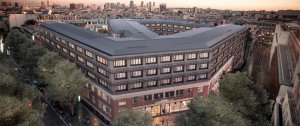Light-controlled flows in active fluids
We generate bio-convection flows in a suspension of phototactic and motile micro-algae Chlamydomonas Reinardthii, via a laser beam excitation. The denser micro-algae concentrate around the laser spot and, as a result of an increase of the local fluid density, generate bio-convection cells, which spatial range is far larger than the spot width. These bio-convective ows appear in a range of dimensionless Rayleigh number (which quantifies the relative importance of convection over diffusion) far below the critical one required for spontaneous (without light excitation) bio-convection. These flows enable the continuous mixing of the fluid by a simple light beam, which is especially interesting in confined geometries or when algae concentration is low. At higher Rayleigh number, a dynamical regime is even observed, where waves of concentration propagate radially with well-defined velocity. Hence, this experiment is a kind of Green function for bioconvection. Our experimental results compare well with numerical simulations of a relatively simple model of bio-convection. This allowed us to identify the mechanisms of the instability that generates the pattern of waves. More precisely, it is gyrotaxis (i.e. the ability of flagellated microbes to self-orient their swimming direction in a shear flow) that induces the focusing of algae in a thin layer, which eventually destabilizes under gravity. The very good agreement between experiments and numerics also enables to measure the diffusion and phototactic motility coefficients of Chlamydomonas Reinardthii [1]. The seminar will present these results in a second part, the first one being dedicated to an introduction on individual and collective swimming of various micro-organisms.
[1] J. Dervaux, M. Capellazzi Resta and P. Brunet. Light-controlled ows in active uids. Nature Physics 13, 306-312 (2017).








